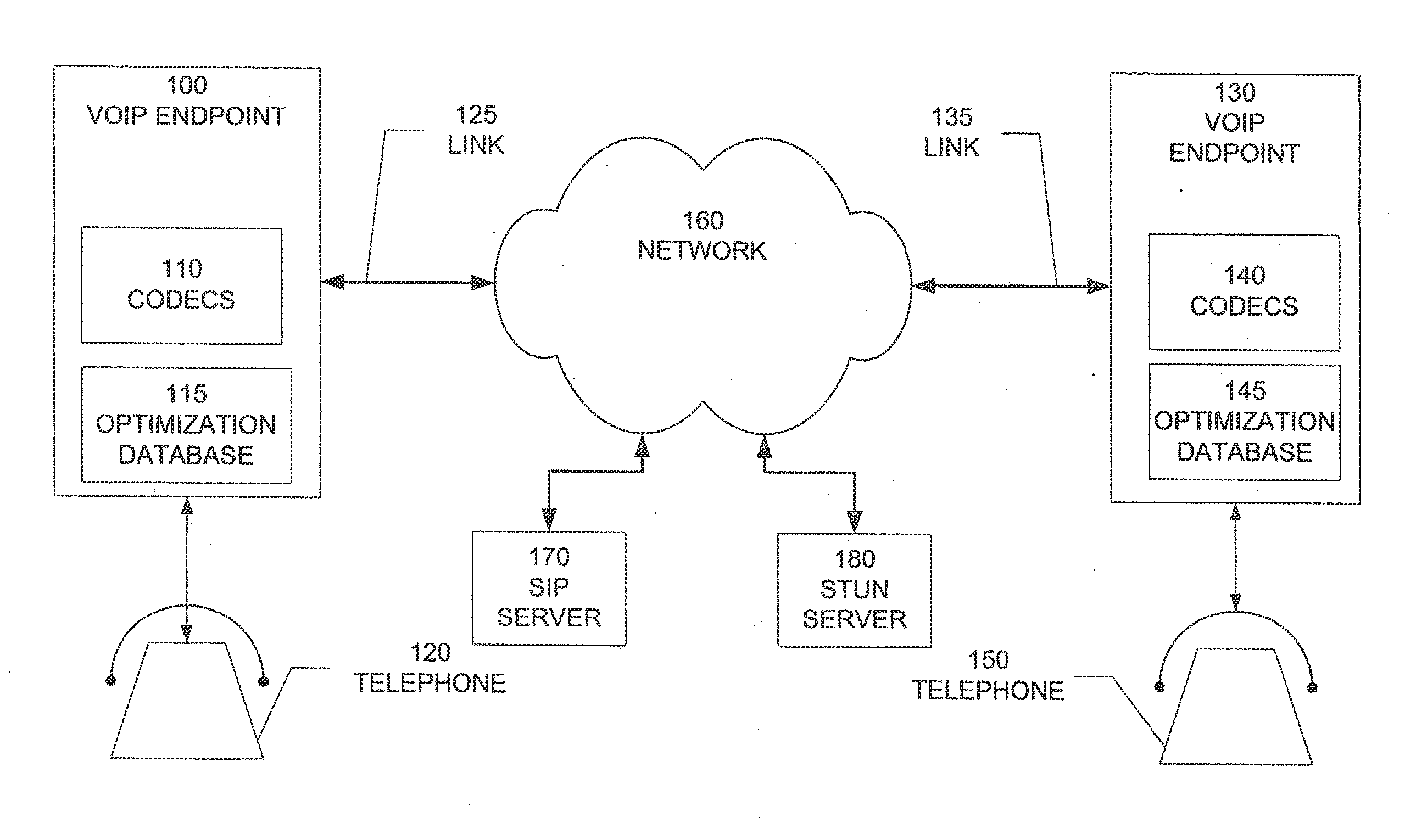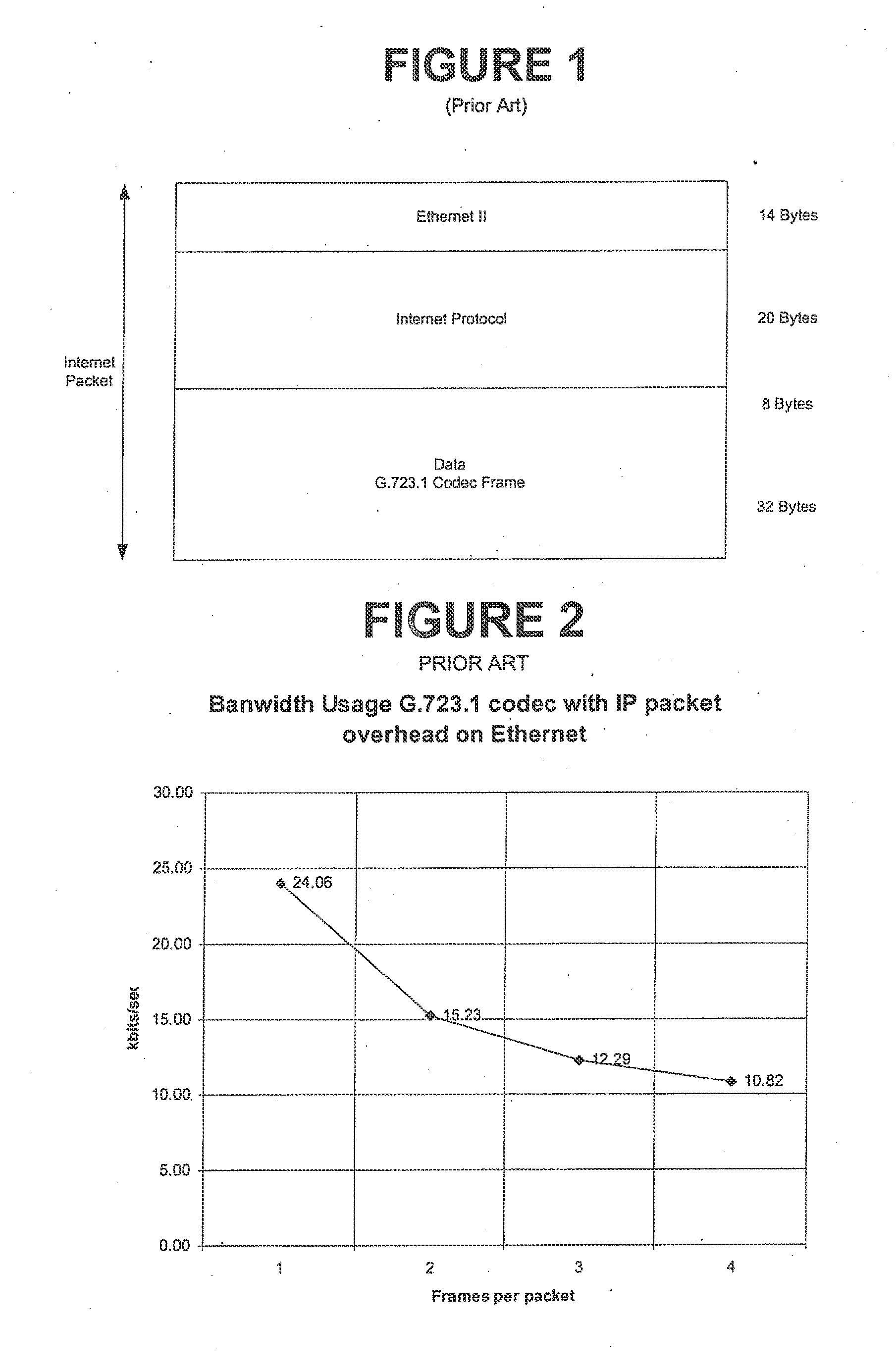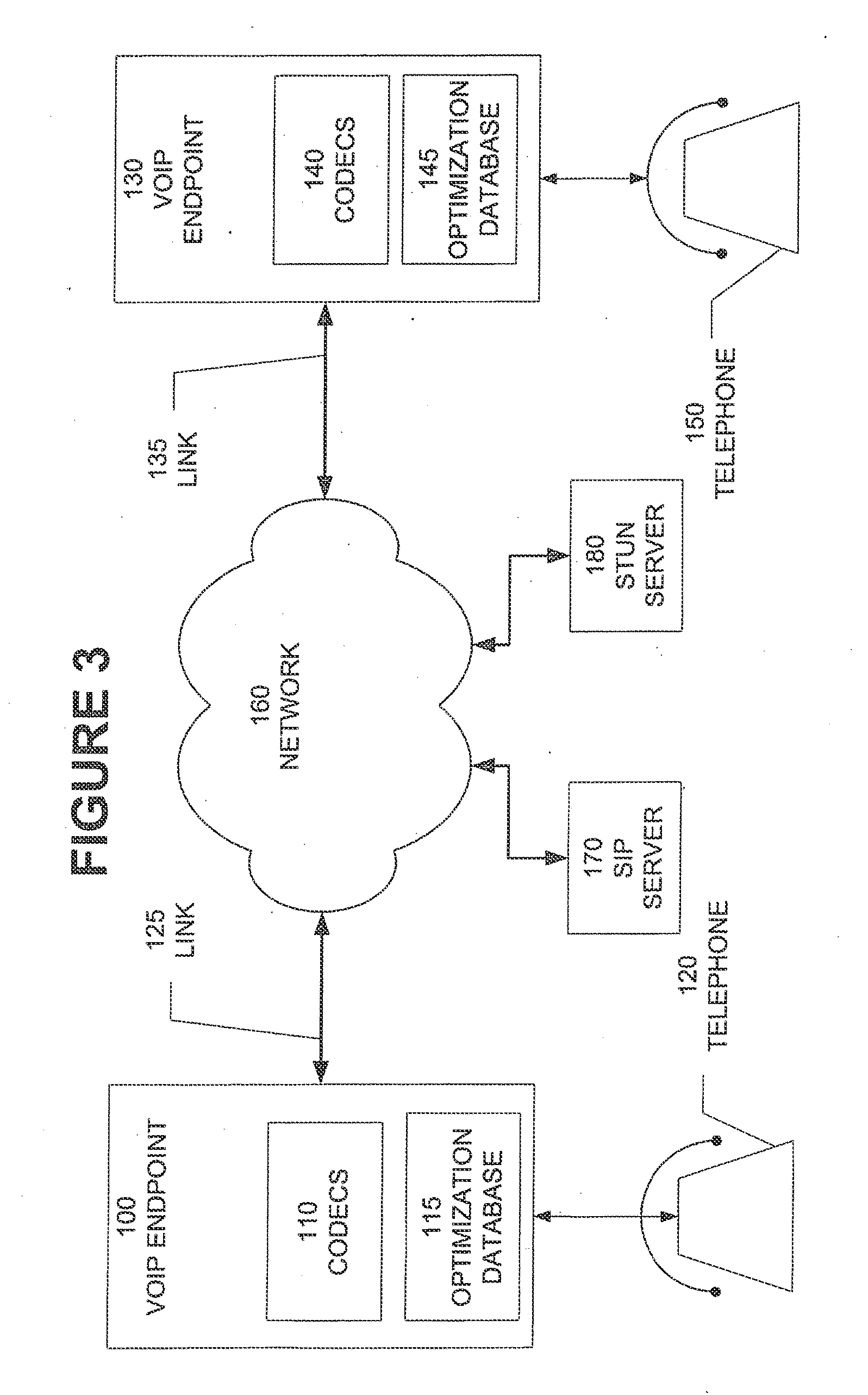System and method of media over an internet protocol communication
- Summary
- Abstract
- Description
- Claims
- Application Information
AI Technical Summary
Benefits of technology
Problems solved by technology
Method used
Image
Examples
Embodiment Construction
[0039]Embodiments of the present invention provide a real-time bandwidth monitor (RTBM) for VoIP applications to sense the available bandwidth between two endpoints of a VoIP communication (herein, a “call path”) and to adapt in real-time the transmission rate to utilize that bandwidth. If sufficient bandwidth is available, the RTBM selects a set of low compression, low latency CODECs to offer best possible media stream quality to the user. The set of low compression, low latency CODECs comprises at least one CODEC. If the bandwidth is constrained, the RTBM, instead of allowing the VoIP application to fail, degrades gracefully by switching to a set of high compression CODECs. The set of high compression CODECs comprises at least one CODEC. On further bandwidth reduction, the RTBM increases the media frames per packet of the in use CODEC set. Because the bandwidth reduction may be transitory, the RTBM constantly monitors the end-to-end available bandwidth of the path so as to invoke ...
PUM
 Login to View More
Login to View More Abstract
Description
Claims
Application Information
 Login to View More
Login to View More - R&D
- Intellectual Property
- Life Sciences
- Materials
- Tech Scout
- Unparalleled Data Quality
- Higher Quality Content
- 60% Fewer Hallucinations
Browse by: Latest US Patents, China's latest patents, Technical Efficacy Thesaurus, Application Domain, Technology Topic, Popular Technical Reports.
© 2025 PatSnap. All rights reserved.Legal|Privacy policy|Modern Slavery Act Transparency Statement|Sitemap|About US| Contact US: help@patsnap.com



